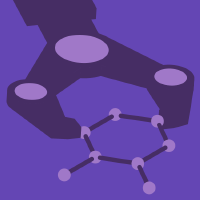Topic Editors

Innovative Synthesis and Applications of Functional Nanomaterials
Topic Information
Dear Colleagues,
Rapid advancements in nanotechnology have revolutionized material science, enabling the development of functional nanomaterials with unprecedented properties and applications. Functional nanomaterials, owing to their unique structural, electronic, optical, and mechanical properties, have become pivotal in addressing critical challenges in diverse fields such as energy, healthcare, catalysis, and environmental sustainability. Their innovative synthesis methods allow for precise control over the size, shape, and composition of nanomaterials, unlocking their potential in diverse cutting-edge applications. This call-for-papers invites contributions to the field of "Innovative Synthesis and Applications of Functional Nanomaterials", which focuses on novel methodologies for synthesizing functional nanomaterials and their applications in energy storage/conversion, environmental remediation, biomedicine, and catalysis.
Topics of interest include, but are not limited to, the following:
- Synthesis: advanced and green synthesis methodologies.
- Characterization: diverse techniques for probing morphology, structure, and properties.
- Energy Applications: batteries, supercapacitors, fuel cells, redox–flow, nanogenerators, and solar energy devices.
- Environmental Applications: water purification and pollution control.
- Biomedical Applications: drug delivery, antimicrobial, anticancer, bioimaging, and biosensors.
- Catalysis: electrocatalysis, photocatalysis, and heterogeneous catalysis.
- Optical Applications: imaging, communication, biophotonics, and storage.
- Hybrid and Composite Nanomaterials: Multifunctional materials for advanced applications.
This Topic seeks high-quality research that highlights innovative synthetic methods in multifunctional nanomaterials, fostering advancements in science and technology.
Dr. Paulraj Arunkumar
Dr. Arun Thirumurugan
Topic Editors
Keywords
- novel synthesis methods
- functional nanomaterials
- material characterization
- energy and environmental materials
- catalysis
- biomedical applications
- hybrid materials
Participating Journals
| Journal Name | Impact Factor | CiteScore | Launched Year | First Decision (median) | APC | |
|---|---|---|---|---|---|---|

Micromachines
|
3.0 | 6.0 | 2010 | 17.2 Days | CHF 2100 | Submit |

Nanomanufacturing
|
- | - | 2021 | 39.8 Days | CHF 1000 | Submit |

Nanomaterials
|
4.3 | 9.2 | 2010 | 15.4 Days | CHF 2400 | Submit |

Processes
|
2.8 | 5.5 | 2013 | 16 Days | CHF 2400 | Submit |

Sustainability
|
3.3 | 7.7 | 2009 | 19.3 Days | CHF 2400 | Submit |

Preprints.org is a multidisciplinary platform offering a preprint service designed to facilitate the early sharing of your research. It supports and empowers your research journey from the very beginning.
MDPI Topics is collaborating with Preprints.org and has established a direct connection between MDPI journals and the platform. Authors are encouraged to take advantage of this opportunity by posting their preprints at Preprints.org prior to publication:
- Share your research immediately: disseminate your ideas prior to publication and establish priority for your work.
- Safeguard your intellectual contribution: Protect your ideas with a time-stamped preprint that serves as proof of your research timeline.
- Boost visibility and impact: Increase the reach and influence of your research by making it accessible to a global audience.
- Gain early feedback: Receive valuable input and insights from peers before submitting to a journal.
- Ensure broad indexing: Web of Science (Preprint Citation Index), Google Scholar, Crossref, SHARE, PrePubMed, Scilit and Europe PMC.


